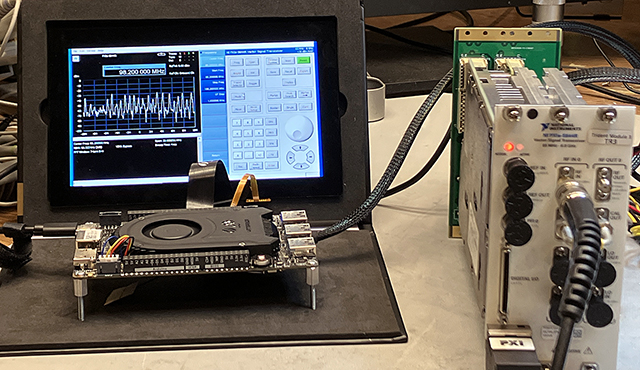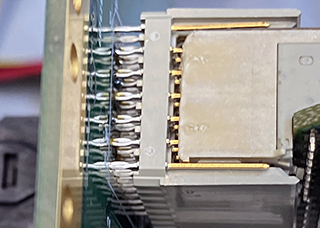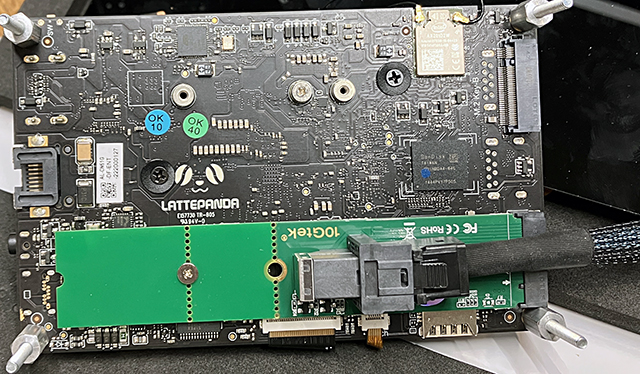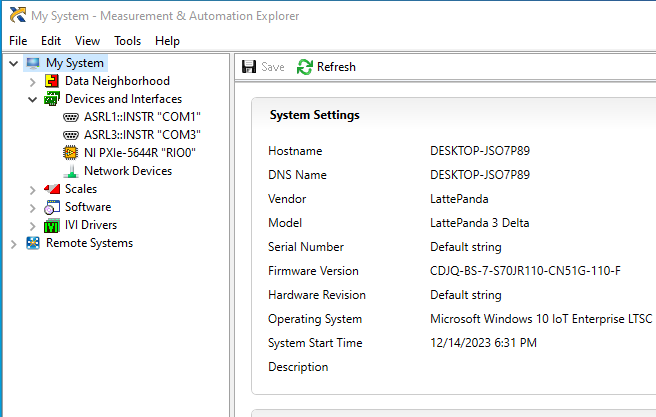Make sure you post if you get it to work!
Some excellent results with your board:

Everything was pretty much plug and play, except for how difficult the 'plug' part is. I was afraid I was going to break something by forcing or hammering the connector into place, and I don't have any mating hardware available to create a makeshift press-fit jig as you did. So I ended just soldering the connector pins after poking them through the board as far as they would go:

Not ideal for a standard backplane installation since the connectors sit about 2mm above the board, but good enough for proof-of-concept.
For the PCIe interface, I decided to try
this adapter for use with an M.2 slot on a LattePanda:

They are sold by a couple of different vendors under the same part number (S-M28643H-1-1). It worked nicely with no additional resistors or other modifications. I powered up the PXIe-5644R with a
mini-ATX supply prior to booting the PC, and it showed up right away in NIMax:

Thanks again for doing all the homework on this!